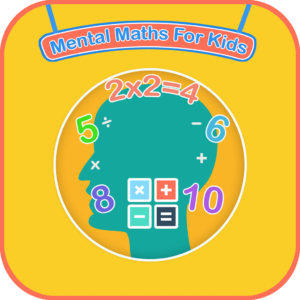Tips To Teach Children About Gratitude
Although teaching gratitude to young children can be challenging, the long-term and endless benefits for their emotional health are significant. Making gratitude meaningful and enjoyable can help kids develop a lifetime love of the planet and all that it has to offer. Teaching kids to be grateful includes assisting them in viewing their situations from a position of gratitude rather than one of deprivation. Parents always look for strategies on “How to teach gratitude to children” Have you ever wondered why is it so important to do so?
Why is it important to instill gratitude in children?
Kids’ points of view are changed when they acquire a practical grasp of gratitude. Instead of reacting negatively and having a scarcity mindset, they are able to perceive the gifts all around them. Happiness fills the soul when one focuses on what they have rather than what they need. Children should be taught gratitude because it helps them learn and make wise decisions. Negative attitudes are counterbalanced by positive ones. Individuals who frequently express gratitude and appreciation are happier, less stressed, and less depressed.
But how can parents or teachers impart such an abstract skill to kids? There are many entertaining Gratitude exercises for preschoolers for parents and teachers for Helping children understand gratitude, and we’ve listed a few below for ideas.
Gratitude activities for toddlers
1. Keep gratitude diaries
A gratitude journal is a popular activity for encouraging kids to express their gratitude. Kids are prepped for the idea of concentration when they are required to reflect on what they appreciate each day. It can be difficult to get them motivated to think quietly. Gratitude prompts are a terrific way to get them going.
2. Gratitude chalkboard
The family can engage in this everyday ritual to build connection. Imagine the bonding experiences your family would have when they just wrote notes of gratitude for everyday things. A daily surprise can also be added by adding to the chalkboard. Sticky notes work just as well if you don’t want to spend the time or money on a chalkboard.
3. Random acts of generosity
These are a wonderful approach to encourage gratitude in kids while also developing positive affect. Urge children to perform random acts of kindness, especially after they have already experienced one. It’s like receiving two advantages at once.
The puzzles for kids include math problems, games that need spatial thinking, logical issues, clever counting, memory tests, and other fun and interesting games, making it one of the best free educational apps for kids

Mental Math App for Kids
The mental math games are all about the ability of thinking and solving a problem in your head. It builds that critical thinking in a child’s mind and makes him able to deduce solutions to different problems.
4. Gratitude ping-pong
Here is a fun, hands-on activity the whole family can enjoy. Get a little, soft ball, then team up. Pass the ball back back and forth for five minutes, expressing your gratitude with each pass. It’s entertaining to observe players becoming more enthused as the game goes on. This is a great exercise to incorporate into athletic training as well.
5. Letters of appreciation
Writing letters of thanks to locals (such as firemen, booksellers, teachers, and neighbors) is a terrific way to start if you want to inspire your family to get more involved in your town. For an even more powerful expression of thanks, include a platter of cookies and deliver the letters personally.
Final Words:
Being grateful is a wonderful life skill that may enhance anyone’s pleasure, peace of mind, and sense of appreciation. Teaching young children how to cultivate their own feeling of gratitude is thus a wonderful strategy to support their development as sensitive, emotionally astute adults.
FAQs
Q1. What are some age-appropriate ways to teach young children about gratitude?
- Some age-appropriate ways to teach young children about gratitude may include:
- Making the word “thank you” a habit.
- Reminding children to use good manners
- expressing your gratitude.
- Helping with household chores.
- Volunteering
Q2. How can parents and educators encourage children to express gratitude in their daily lives?
Here are some simple gestures for parents and educators encourage children to express gratitude in their daily lives:
- Saying Thank You often
- Help the needy
- Appreciating them for their good work
Q3. Are there any specific activities or exercises that can help children develop a grateful attitude?
Yes, Given below are specific activities or exercises that can help children develop a grateful attitude:
- Gratitude jar
- Gratitude walk
- Volunteering
- Random acts of kindness
Q4. Can teaching children about gratitude have a positive impact on their mental health and well-being?
Yes, teaching children about gratitude has a positive impact on their mental health and well-being. According to studies, expressing gratitude can enhance both physical and mental health, increase self-esteem, and improve sleep quality, all of which lead to happier, healthier kids.
Q5. How can parents and teachers model grateful behavior for children and lead by example?
Here are some ways how parents and teachers can model grateful behavior for children and lead by example;
- Spend time with each other.
- Help with the house.
- Be kind to your parents.
- Tell them that you love them.
- Gift them to appreciate





